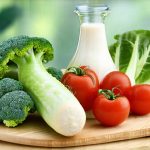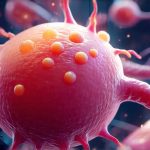Gut health is increasingly recognized as foundational to overall wellbeing, extending far beyond just digestion. When the intricate ecosystem within our gut—the gut microbiome—becomes imbalanced due to factors like antibiotics, chronic stress, poor diet, or illness, it initiates a recovery process that profoundly impacts how we experience taste. This isn’t merely about craving different foods; it’s a fundamental shift in what provides satisfaction and even what feels tolerable to eat. Understanding these shifts is crucial not only for supporting gut healing but also for navigating the often confusing and frustrating changes in appetite and food preferences during this time.
The journey of gut recovery involves rebuilding a diverse and resilient microbial community, which necessitates adjustments in dietary intake. As the gut heals, our bodies become more sensitive to foods that previously caused no issue, while simultaneously craving nutrient-dense options that support restoration. These cravings aren’t whimsical; they represent the body’s innate intelligence working to optimize healing and re-establish a healthy internal environment. Ignoring these signals can hinder progress, whereas embracing them – with mindful awareness – can significantly accelerate recovery and foster a more harmonious relationship with food. This article will delve into the specific shifts in taste preferences commonly experienced during gut repair and how to navigate them effectively.
The Evolving Palette: Changes During Gut Healing
Taste perception is far more complex than simply what our taste buds detect. It’s intrinsically linked to the gut-brain axis, a bidirectional communication network between the digestive system and the brain. An unhealthy gut disrupts this connection, leading to altered signaling and subsequent changes in how we experience flavor. As the gut microbiome begins to rebalance during recovery, these signals shift, often resulting in dramatic alterations to taste preferences. Initially, strong flavors—particularly those found in processed foods or high-sugar items—can become intensely unpleasant. This is because the gut no longer tolerates the inflammatory load associated with these foods and sends a signal of aversion. Conversely, bland or simple foods that were previously unappealing may suddenly become incredibly satisfying.
This phenomenon isn’t solely about taste; it’s also about texture. Many individuals undergoing gut repair report increased sensitivity to certain textures—for example, finding fibrous vegetables difficult to digest or experiencing discomfort with overly chewy foods. This is due to the gut’s reduced capacity to efficiently break down these items during the early stages of healing. The body prioritizes easily digestible nutrients and minimizes stress on the digestive system, leading to a preference for softer, smoother textures. It’s important to acknowledge that these changes are temporary, though they can feel very real and disruptive in the moment. If texture sensitivities arise after travel, consider checking out resources about bathroom routine collapse.
The craving for specific nutrients also plays a significant role. As beneficial bacteria repopulate the gut, they require specific substrates—essentially food—to thrive. This often manifests as intense cravings for fermented foods (like yogurt or kefir), prebiotic-rich foods (such as bananas or garlic), or easily digestible protein sources. These aren’t random desires; they are signals from the microbiome indicating what it needs to flourish and restore gut health. Responding to these cues, within reasonable limits, can actively support the healing process.
Navigating Texture Sensitivities
Texture sensitivities are a surprisingly common feature of gut recovery, often leading to significant dietary restrictions. Many individuals find themselves avoiding previously enjoyed foods simply because the texture feels “wrong” or causes discomfort. Understanding why these sensitivities arise is the first step towards managing them. As mentioned earlier, it’s largely due to impaired digestion and increased sensitivity within a healing gut. The digestive system isn’t able to efficiently process certain textures, leading to bloating, gas, or even pain.
Here are some strategies for navigating texture sensitivities:
1. Start with simpler options: Focus on easily digestible foods like well-cooked vegetables (pureed if necessary), soft fruits, and lean proteins.
2. Gradual reintroduction: Slowly introduce more complex textures as your gut heals, paying close attention to how you feel after eating them.
3. Preparation methods matter: Cooking methods can significantly alter texture. Steaming or boiling vegetables softens them, while roasting can make them more difficult to digest. Experiment with different techniques to find what works best for you.
It’s vital not to force yourself to eat foods that cause discomfort. This reinforces a negative association with food and hinders the healing process. Instead, focus on finding enjoyable alternatives within your tolerance range and gradually expanding your options as your gut health improves. Remember that this is a temporary phase, and most individuals regain their ability to tolerate a wider range of textures over time. If you’re experiencing digestive distress alongside these sensitivities, it’s helpful to learn about common first steps in gut investigations.
The Rise of “Bland” Foods
During gut recovery, there’s often a noticeable shift towards craving or finding satisfaction in what many would consider “bland” foods – rice, potatoes, cooked chicken, simple steamed vegetables. This isn’t about losing your taste for flavorful food; it’s about prioritizing ease of digestion and minimizing inflammation. A compromised gut struggles to process complex flavors and ingredients, leading to discomfort when exposed to them. Bland foods are generally easier on the system because they require less digestive effort.
This can be a difficult adjustment for those accustomed to highly seasoned or processed foods. The challenge is to find ways to make these bland options palatable without overwhelming your gut. Utilizing gentle seasonings like turmeric, ginger, or small amounts of herbs can add flavor without causing irritation. Focusing on quality ingredients – organic where possible – also enhances the overall nutritional value and supports healing.
It’s important to view this phase as a reset for your palate. Over time, as your gut heals, you may find that your appreciation for subtle flavors increases, allowing you to enjoy food in a new way. This can lead to a more mindful and balanced relationship with eating, free from the dependence on excessive seasoning or artificial flavorings.
The Craving Conundrum: Identifying True Needs
Cravings are often demonized as signs of weakness or lack of willpower. However, during gut recovery, they’re frequently valuable signals indicating what your body needs to restore balance. The key is discerning between true cravings—those driven by nutritional deficiencies or microbiome needs – and emotional cravings—those linked to stress, habit, or emotional states. True cravings often feel specific and persistent, while emotional cravings are more generalized and fleeting.
If you find yourself craving fermented foods, it could indicate that your gut bacteria need a boost of probiotics. Cravings for easily digestible protein might signal the need for amino acids to repair damaged tissue. However, be cautious about acting on all cravings without discernment. If you’re craving sugar or processed foods, even during gut recovery, resist the urge to indulge excessively. Instead, explore healthier alternatives that satisfy a similar nutritional need. For example, if you’re craving sweetness, try fruit instead of candy. Understanding gut pH shifts can help explain some of these cravings.
Pay attention to how different foods make you feel after eating them. Keep a food journal to track your symptoms and identify any patterns or triggers. This can help you refine your diet and make informed choices that support your gut healing journey. Ultimately, learning to listen to your body’s signals is the most effective way to navigate the shifting taste preferences during this time.
Long-Term Palate Re-Education
As gut health improves, taste preferences gradually evolve again. The goal isn’t necessarily to return to exactly how things were before; it’s about developing a more balanced and intuitive relationship with food. This involves re-educating your palate to appreciate natural flavors and nourishing foods. This process requires patience and mindful awareness, but the rewards – improved digestion, increased energy, and enhanced wellbeing – are well worth the effort.
One effective strategy is to incorporate slow eating practices. Taking the time to savor each bite, focusing on the texture and flavor, allows your brain to register satiety signals more effectively. This can prevent overeating and promote a greater appreciation for food. It also encourages mindful awareness of how different foods make you feel, further refining your ability to respond to your body’s needs.
Another important aspect is continuing to prioritize gut-healing foods even after symptoms have subsided. Fermented foods, prebiotic-rich vegetables, and lean proteins should remain staples in your diet. This ongoing support helps maintain a healthy microbiome and prevents relapse. It’s also beneficial to minimize processed foods, sugar, and artificial ingredients, as these can disrupt the delicate balance of the gut ecosystem. Ultimately, palate re-education is about cultivating a lifelong commitment to nourishing yourself from the inside out. Remember that stool quality is often a key indicator of overall gut health during this process. And don’t underestimate how mental clarity can impact your digestive system and recovery! Finally, be aware that marathon training or similar intense physical activity can significantly alter gut function.


















